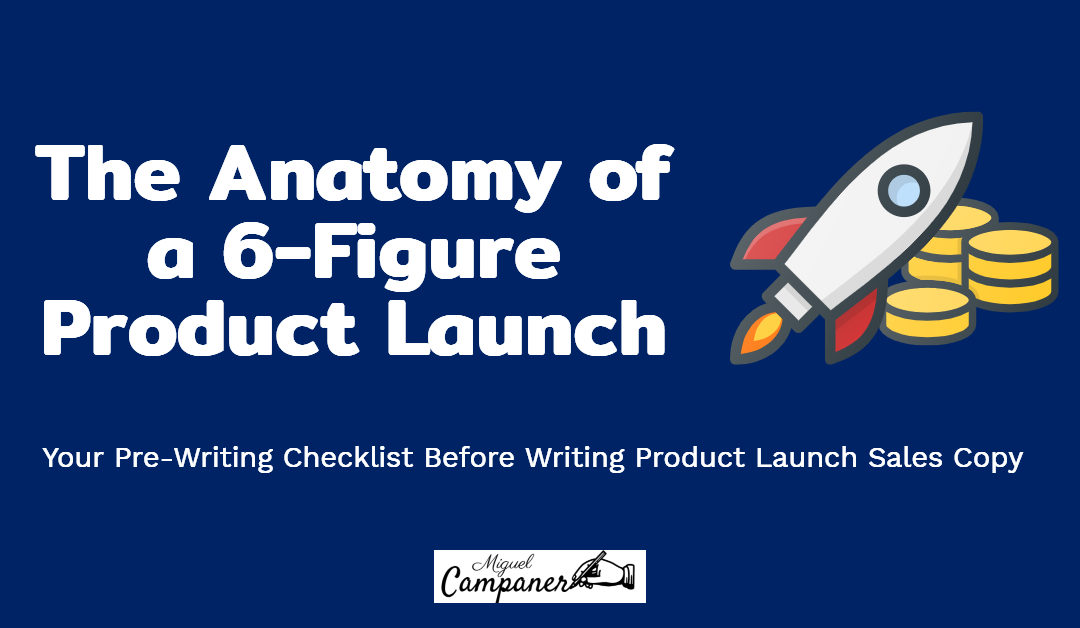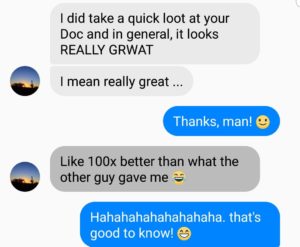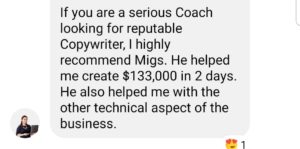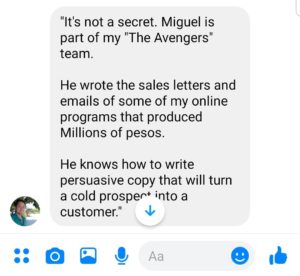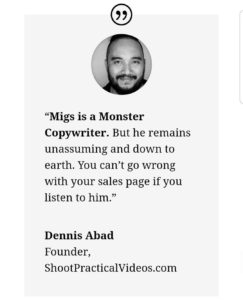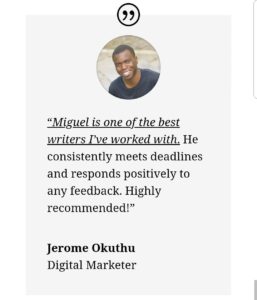What do you learn after helping clients generate over $1,000,000 in gross sales in 12 months?
Well…
A lot…
One of them is how to map out a profitable product launch funnel.
That’s what you’ll discover in this post.
But before that, I’d like to give you context first…
In the past few years, I’ve worked with dozens of clients who promote their offers through product launches.
Some of them were profitable. Some of them flopped.
But even in those flops, we still generated sales.

That’s the beauty of product launches.
Even if there’s a major disaster — like the copy’s not good or a tech problem occurred — you’ll still generate sales.
Of course, you want to experience more wins than losses.
Product launch sales funnels are a lot of work. You need to write over 200 pages of sales copy, create sequences, schedule the content, and then there’s also the back-end too.
Contents
After experiencing both wins and losses, I had a HUGE realization…
This realization helped me (and my clients) craft profitable product launches over and over again.
Even though we were selling the same thing and the market is almost exhausted, we were still able to generate NEW interest.
My realization was this:
If you want to create a profitable product launch, you must have these 9 elements. And these 9 elements are at the core of any six-figure product launch.
So…
Without further delay, let me reveal to you…
The Anatomy of a Six-Figure Product Launch
#1 – Pre-Frame
“90% of sales happen during the Pre-Frame.”
One of the reasons product launches work is because of anticipation. You hype up the new opportunity your offer will bring. You show them what’s possible, how it works, and how they can use it to get what they want.
But the selling starts waaaaaaaaay before you open the doors for enrollment.
The selling starts during the pre-launch phase. In this phase, you must persuade them that this *new opportunity* will work for them.
This is crucial.
If you can’t do that, your sales will fall flat.
#2 – Crushing Objections
“Crush objections BEFORE they arise.”
You must crush objections and address skepticism before they arise. If you do it AFTER, it’s already too late.
Those objections, doubts, and skepticism will be already inside their head. And it’s hard to remove negative thoughts out of our brain…
#3 – Myths and Misconceptions
“What’s the #1 belief your prospect must believe before buying?”
Do you know the answer to this question? If not, go back to the drawing board.
You must break the myths your prospects have and replace it with new beliefs. And these new beliefs MUST pre-frame them and make them more susceptible to the sale.
Here’s an example:
Myth: Cardio helps you lose weight.
New Belief: Caloric deficit makes you lose weight.
Product: Buy this ebook on how to lose weight without dieting or cardio.
Information alone won’t increase your sales. That’s why you also need…
#4 – Keep them at the edge of their seat
“Do you have open loops in your copy?”
Open loops is what made Andre Chaperon an A-list copywriter. When you read his emails, you can’t look away. You just had to finish it and read the next email.
That’s why open loops are important. It keeps your audience’s attention.
We all know our market’s attention span is getting shorter and shorter. That’s why having open loops in your copy is more important than ever.
Use open loops in your copy and see your opens and conversions rise.
#5 – Persuasion Triggers
“People will do anything for those who…” ~Blair Warren
Blair Warren is the author of “27-Word Persuasion.” In his book, he explains that all you need to know about persuasion is inside this 27-word sentence.
“People will do anything for those who encourage their dreams, justify their failures, allay their fears, confirm their suspicions and throw rocks at their enemies.”
So the question now is…
Do you know what your prospects’ dreams are?
How about their failures?
Their fears?
Their suspicions?
Their enemies?
Are you encouraging them? Justifying their failures? Allaying their fears, confirming their suspicions and battling their enemies?
If not, then you should.
Go back. Look over your copy. Try to inject these persuasion triggers into your emails, PLCs, sales letters, VSLs, etc.
#6 – Story Telling
“Show. Don’t Tell”
You’ve probably heard this over and over again, right?
Whenever you write copy, you have to SHOW and don’t tell.
But what does that actually mean? How exactly do you do that?
Well, here’s a hint…
As much as possible, don’t use adjectives. Use verbs in your sales copy.
Another way to “Show and Don’t Tell” is to write in the “active voice” instead of the “passive voice.”
You can always use HemmingwayApp and see how many Active and Passive sentences you have. Once you found them, edit accordingly.
#7 – Include The 5 Types of Proof (and Why You Should Have at Least 2)
“Why Should I Trust You?”
There are dozens types of proof. But during product launches, I typically see these 5 types.
First, Social Proof — Case Studies and Testimonials.
Second, Technical Proof — Research Report, Scientific Study, and 3rd party articles.
Third, Factual Proof — Data and Surveys.
Fourth, Qualifications — Explain what makes you qualified to teach about X. Is it experience? Is it your awards? Your degree?
Fifth, Endorsement from a relevant celebrity or expert in your niche.
If you want your prospects to trust you completely, you need to have these 5 things. You’ll instantly be seen as an authority and expert.
The easiest proof you can get is technical and factual proof. You can obtain this even as a beginner. You just need strong research skills.
The next easiest proof to get is social proof. Next is qualifications. Last are endorsements.
#8 – Consequences
“What are the consequences of NOT acting?”
Product launches work because there’s a hard deadline. If they don’t join before the deadline, something bad will happen.
Maybe they miss out on the bonuses… the price will increase… or the program’s closed for at least 6 months.
Whatever it is, you must state clearly what the consequences are for NOT acting. Otherwise, they will never act.
By doing this, you’ll also trigger FOMO (fear of missing out). This is a powerful emotional trigger that makes people do impulsive things…like buying stuff they don’t actually need.
That’s why only use this if your offer is proven-and-tested to work.
Alright?
Great.
Now, onto the last one…
#9 – Unique Selling Proposition
“Don’t be better. BE DIFFERENT.”
You can win and make money by being the better product. But if you want to DOMINATE, you need to be different.
Uniqueness stands out. More importantly, it attracts attention.
That’s why I’ve always encouraged my clients to find a unique mechanism or an underserved hyper-sub-niche they can serve.
If you’re in a competitive niche and you start your pitch by saying “I’m better than X, Y, and Z product!”…
…NO ONE will pay attention to you.
But if you’re unique. Your approach is different. And because of this you’re getting results, then you’re more likely to sell more.
So, with that said, let me ask you a few questions…
What makes you unique among your competitors? Do you know? If so, are you using it in your marketing and selling?
If not, why?
And that’s it.
This is the Anatomy of a Six-Figure Product Launch
To quickly recap, you need to…
1. Pre-Frame
2. Crush Objections
3. Break Myths and Misconceptions
4. Keep them at the edge of their seats
5. Use Persuasion Triggers
6. Show, Don’t Tell
7. Inject the 5 Types of Proof
8. Explain the Consequences
9. Highlight Your USP
Now, let me ask you…
Did I miss anything?
Let me know in the comments below.

